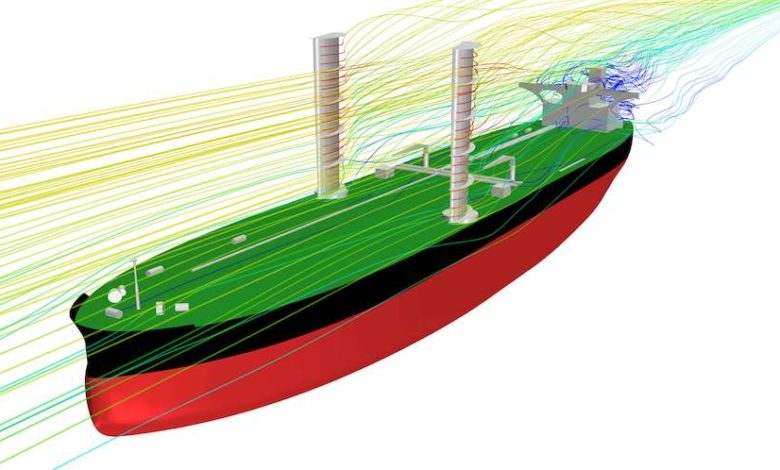Koreans develop innovative wing-sail

Class society DNV GL has awarded an approval in principle (AIP) to Korea Shipbuilding and Offshore Engineering (KSOE), the parent of Hyundai Heavy Industries, for a wing-sail auxiliary propulsion system for ships – the result of a joint research project between KSOE and SK Shipping.
“We are speeding up efforts to bring eco-friendly technologies to the market. The wing sail system will reduce fuel consumption by more than 6%. We will take the lead in the next-generation ship market and continue to strengthen our technological competitiveness,” said Hyunjoon Shin, head of the future ship research department of KSOE.
“This is a promising technology that shows new possibilities for ship owners to be able to meet IMO standards for reducing carbon emissions,” added Haeyong Son, vice president of SK Shipping.
The wing sail design is 20 m wide, 50 m high and installed vertically on both sides of the deck. It rotates its wings according to the direction and intensity of the wind to provide auxiliary propulsion to the ship. The wing can be lowered to 10 m in height, making it flexible in case of bad weather or when passing under a bridge.
The new wing sail propulsion system can be installed on many types of vessels.

6%? With news coming in every day that we need to cut emissions by more like 80% across the board, they offer a “solution” that cuts emissions by 6%? If we put up with this kind of rubbish, we lose. Simple as that.
That said, dramatically reducing ship speed will help enormously, and also boost the effectiveness of sails. So the 6% figure probably shouldn’t be taken too literally.